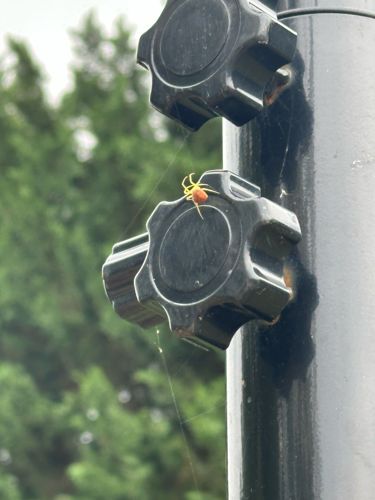Candy-striped Spider
Scientific Name: Enoplognatha ovata
Order & Family: Araneae, Theridiidae
Size: Females typically 4-6 mm, males 3-5 mm.

Natural Habitat
Found in a variety of habitats including gardens, grasslands, woodlands, and urban areas. They often build their webs on low-lying vegetation, shrubs, and sometimes on structures like fences or poles.
Diet & Feeding
Mainly small insects that get caught in their irregular, tangled webs, such as flies, aphids, and small moths.
Behavior Patterns
This spider constructs a messy, three-dimensional web often referred to as a tangle web or cobweb. They are active during the day and night, typically waiting in their web for prey. Females lay eggs in a silk sac and guard them. They are known for their variable coloration, which can include solid cream, red stripes, or red spots on a cream background.
Risks & Benefits
Generally harmless to humans. Their venom is not considered medically significant. They benefit the ecosystem by preying on various small insect pests, helping to control insect populations.
Identified on: 9/17/2025